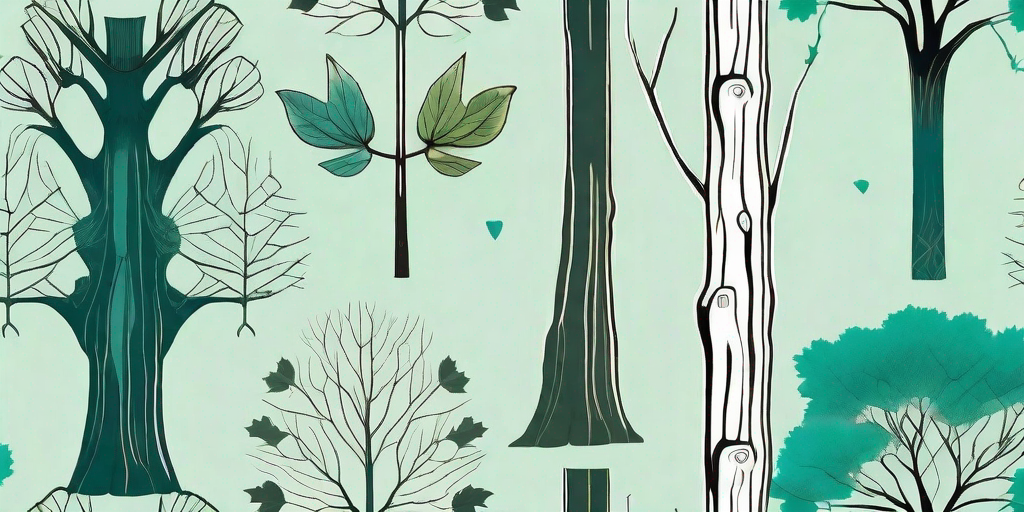
Maple trees, those leafy giants that grace our backyards and parks, are not just a sight for sore eyes. They are also a hotbed of intrigue, mystery, and...disease? Yes, you heard it right. Even trees get sick, and when they do, it's up to us, the Sherlock Holmes of the botanical world, to decipher the clues and diagnose the ailment. So, put on your detective hat, grab your magnifying glass, and let's dive into the fascinating world of maple tree bark diseases.
Understanding Maple Tree Bark Diseases
Before we start our detective work, let's get to know our 'patient' a little better. Maple trees are susceptible to a variety of diseases, many of which manifest on the bark. These diseases can be caused by fungi, bacteria, insects, or environmental stressors. But don't worry, you don't need a PhD in Plant Pathology to spot these diseases. A keen eye and a little bit of knowledge will do the trick.
Now, you might be wondering, why should you care about tree diseases? Well, aside from the fact that a sick tree is a sad sight, tree diseases can also affect the health of other plants in your garden, decrease property value, and even pose a safety risk if the tree becomes unstable. So, you see, tree health is serious business!
Identifying Common Maple Tree Bark Diseases
Alright, now that we've established the importance of tree health, let's get down to the nitty-gritty. Here are some of the most common maple tree bark diseases and how to identify them.
1. Anthracnose
Anthracnose sounds like a dinosaur, but it's actually a fungal disease that causes dark, sunken lesions on the bark. If your tree looks like it's been in a boxing match with a T-Rex, it might be suffering from Anthracnose.
But don't panic just yet. While Anthracnose can cause significant leaf drop, it's rarely fatal to the tree. Regular pruning and good sanitation practices can help manage this disease.
2. Verticillium Wilt
Verticillium Wilt is another fungal disease, but this one's a bit more sinister. It causes the bark to crack and ooze dark sap. If your tree is crying black tears, it might be infected with Verticillium Wilt.
Unfortunately, there's no cure for this disease, and it can be fatal to the tree. The best course of action is to remove and destroy the infected tree to prevent the disease from spreading.
3. Tar Spot
Tar Spot is a fungal disease that causes black, tar-like spots on the leaves and bark. If your tree looks like it's been in a paintball fight, it might have Tar Spot.
While Tar Spot can make your tree look unsightly, it's not usually harmful. Regular raking and disposal of infected leaves can help control this disease.
Preventing Maple Tree Bark Diseases
Now that we've covered the common diseases, let's talk about prevention. After all, an ounce of prevention is worth a pound of cure, especially when it comes to tree health.
Firstly, proper tree care is crucial. This includes regular watering, fertilizing, and pruning. Secondly, good sanitation practices, such as cleaning up fallen leaves and debris, can help prevent the spread of diseases. Lastly, regular inspections can help catch diseases early, before they become a major problem.
Frequently Asked Questions
1. Can maple tree bark diseases spread to other trees?
Yes, many tree diseases can spread to other trees, especially if they are of the same species. This is why it's important to remove and destroy infected trees and debris.
2. Can maple tree bark diseases be cured?
Some diseases, like Anthracnose and Tar Spot, can be managed with proper care and sanitation practices. However, other diseases, like Verticillium Wilt, are fatal and cannot be cured.
3. How often should I inspect my maple trees for diseases?
It's a good idea to inspect your trees at least once a season. Look for changes in the bark, leaves, and overall health of the tree.
Conclusion
So there you have it, a crash course in maple tree bark diseases. Remember, tree health is important, not just for the tree, but for the entire ecosystem. So, keep an eye on your leafy friends, and don't be afraid to call in a professional if you spot something amiss.
Now, go forth and be the Sherlock Holmes of the botanical world!















